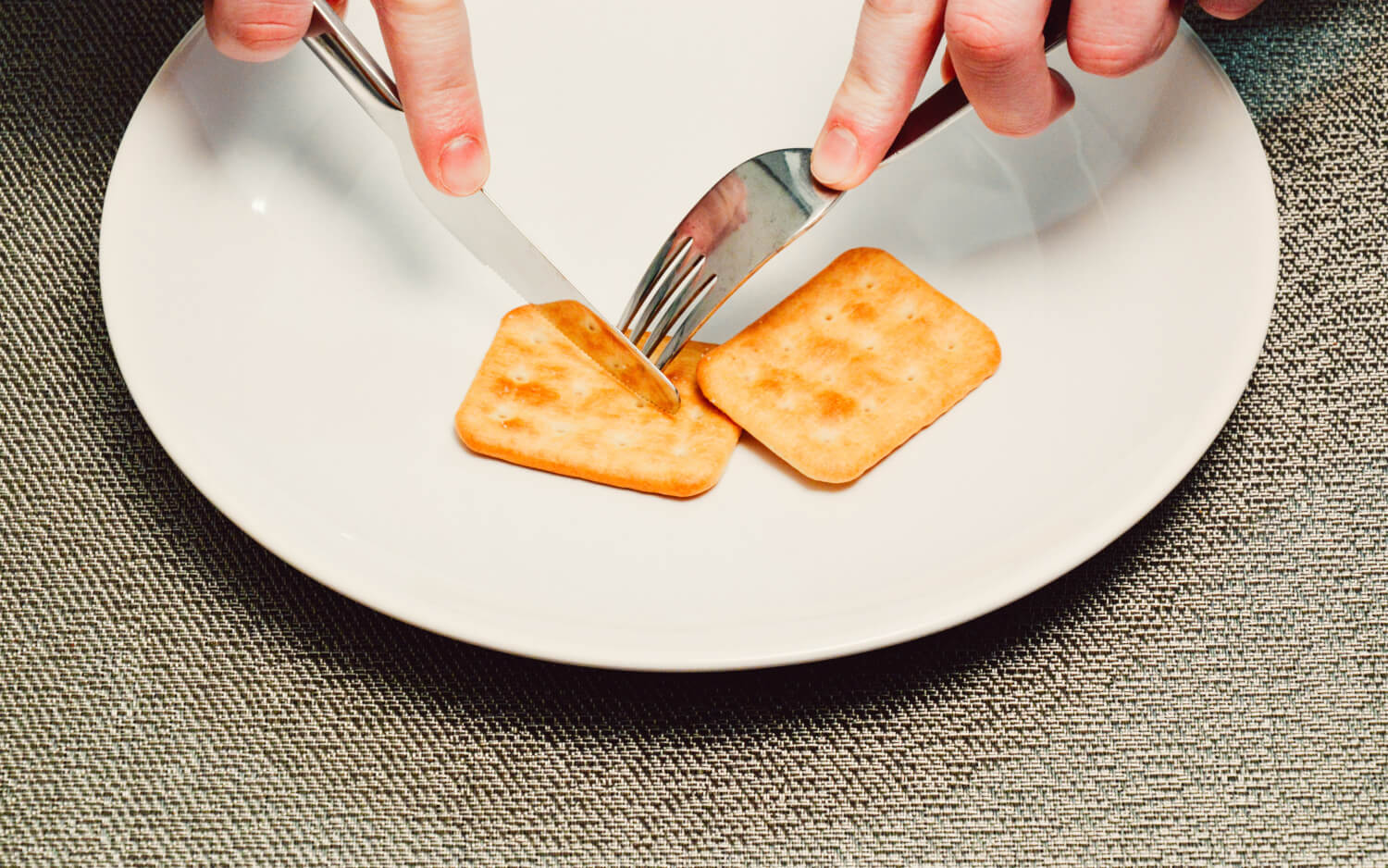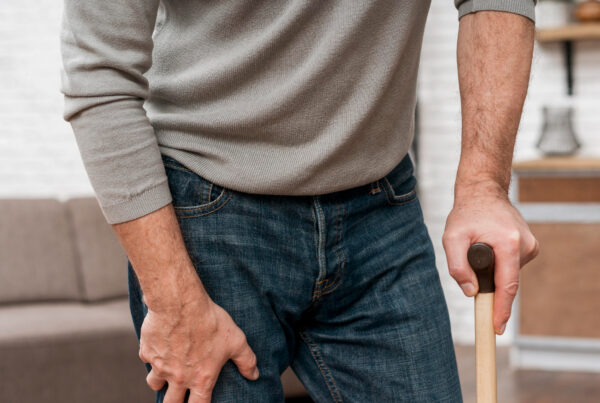If you’re here, you probably hate dieting. For many people, simply the word “diet” brings feelings of misery.
A “diet” for a lot of people means: “I’m going to develop the self-control of a monk, start eating low-calorie, healthy foods that I don’t like, cut out unhealthy foods that I do like, and starve myself.”
No wonder so many people fail! But it doesn’t have to be this way.
If your goal is to make long-term changes to your body composition, then yes, you need to accept the principle that unless you have some type of medical condition affecting your metabolism, you need to use more calories than you get from your food. This is called a caloric deficit. It’s real, it works, and science has backed it up forever.

But losing body fat doesn’t have to be severe dietary restrictions and starvation. If you make smart nutritional choices, adopt healthy eating habits, and incorporate enough exercise, you can still eat the foods you like, and make long-term improvements to your body composition.
Seriously. Let’s take a look.
You Really Don’t Need To Starve Yourself

Going on a diet usually means eating less than you usually do, but losing the unwanted fat you gained over time doesn’t mean you have to stop eating, skip meals, or starve yourself.
To illustrate, let’s take a look at what happened to a group of people who actually were starved: the participants of Ancel Keys’ famous Minnesota Starvation Experiment.
If you’re unfamiliar, here’s a brief history lesson: In the 1940s, the Allied powers were pretty sure they were going to defeat Hitler in Europe, and they needed to know how to deal with a starving European continent once the war was won. In order to do that, they needed data on what happens when people starve and are later re-fed.
36 healthy volunteers were selected to go on a yearlong starvation experiment that consisted of 3 months overfeeding, 6 months near-starvation, and 3 months refeeding/recovery.
Did they lose weight? You better believe they did: roughly 25% of their body weight, gone in 6 months.
What happened here? How did they lose so much body weight so quickly? The same way everyone loses body weight: by being in a caloric deficit. However, the deficit the experiment participants experienced was very extreme.
After adjusting their bodies to 3 months of a 3,200-calorie/day meal plan, their diets were uniformly slashed to 1,570 calories a day, a reduction of about 1,630 calories. But they weren’t allowed to just sit around; the participants were further required to walk 22 miles a week AND expend 3,009 calories a day.

We’ll do the math for you: that’s a caloric deficit of nearly 1,500 calories a day, or 10,000 calories a week.
That’s about triple the caloric deficit required to lose a pound of fat per week, which is an achievable goal. The starvation diet in the Minnesota study was anything but healthy and came with the following starvation-related side effects:
- Increased weakness
- Increased feelings of introversion
- Increased irritability/impatience with others
- Dizziness
- Extreme fatigue
- Hair loss
- Obsession with food
You don’t want any of these effects, nor do you need to experience them. A caloric deficit of approximately 500 calories/day has been shown to be effective, especially for initial fat losses.
How you achieve that caloric deficit doesn’t have to be extreme either, which brings us to the second point…
Choose a Caloric Deficit That Works For You
There are two ways to create a caloric deficit: cutting calories from food and increasing your activity level. In the Minnesota Starvation Experiment, both methods were used to create that drastic caloric deficit. You can do the same (although there’s no reason to go to the extreme like in the experiment). Here’s how:
Calculate the number of calories your body burns at rest, also known as your Basal Metabolic Rate (BMR). Online calculators exist that will estimate this for you, and some methods of body composition analysis can also estimate your BMR.
Take your BMR and multiply it by 1.2 (this being the conversion rate for a sedentary person. If you have an active job or already exercise and are maintaining your weight, you’ll multiply it by a higher factor). For example, let’s say your BMR is 1631 calories; a rough estimate of your total caloric needs would be around 2,000 calories to maintain weight. Shave off 500 calories for the caloric deficit, and the caloric balance each day to lose a pound of body fat per week will be around 1,500 calories a day.
Now here’s the part where you get to make a decision by choosing a calorie-reducing strategy that works for you. How will you create this 500-calorie reduction?
You really do have a choice in the matter. In a study of overweight people, participants were made to create an overall 25% energy reduction. The first group achieved this reduction entirely through caloric restriction; the other achieved it with a 12.5% reduction in food intake and an increase of 12.5% in energy use due to exercise (equaling a 25% reduction in energy).
Both groups lost 10% of their body weight and 24% of their Fat Mass, with the researchers concluding that it didn’t matter whether you simply cut calories or cut calories and exercised: what mattered was the total energy deficit.
This isn’t to say that effort the exercising group made was completely useless – the researchers found aerobic benefits to their exercise – or that strength training should be avoided during fat loss since it’s been shown to preserve muscle. What it does mean is for fat loss, you have some choices on how you want to achieve it.

For example, if you already feel like you are eating very little, cutting 500 calories from your meal plan might be extremely difficult for you. You can make up the bulk of your caloric reduction by increasing the energy you expend throughout the day.
You could also go the alternate route.

If you think you can the bulk of your calories from your meal plan without with a small increase in the exercise you already do, that’s also an option.
The point is when it comes to weight loss, one size doesn’t fit all, and if you follow a program that isn’t designed for you and is too hard to stick with, the chances you’ll quit are high.
But before you start cutting everything out of your diet that you like to eat…
Choose Things That You Want To Eat and Eat Them
Really.
Don’t just cut everything you’ve ever enjoyed eating out of your life with a buzzsaw. It’s not completely necessary and can actually work against you.
Think of your daily caloric intake as a budget, and your caloric deficit is the “money” put away for a vacation. If you stay within your budget, after a period of saving, you get to go on a trip.
So long as you stay within your budget, it doesn’t always matter how you spend the rest of your money. So it is with calories. You don’t have to cut out everything you like to keep your diet, and here are a couple of truths that can keep you motivated.

-
Fat isn’t your enemy
For decades, it’s been common knowledge that a high-fat diet leads to obesity. Fat used to be at the top of the food pyramid, something that you ate only sparingly. Well, it turns out that those high-carb/low-fat diet rules may have been sabotaging your efforts for years.
While this doesn’t mean you can overeat fatty foods, this does mean it’s OK to incorporate healthy fats in your diet and still reach your goals. Bring on the avocados and olive oil! (just be careful about the high-calorie foods – you still need a caloric deficit).

-
High-protein diets can make you feel fuller/help you eat less
Often dismissed as a concern of bulky bodybuilders and powerlifters, eating foods high in protein can actually go a long way in helping you lose fat properly. That’s because foods rich in protein have been shown to have a positive effect on feeling full.
If you include healthier, protein-rich foods in your diet, you might have an easier time sticking to your diet while you enjoy meat, fish, eggs, and other protein-dense foods.
You Don’t Have To Hate Dieting
You will hate dieting if you go about it the wrong way. What’s the wrong way? Going too extreme on any part of it.
You do not need to starve yourself and then slave away at the gym. Even though reaching rapid weight loss goals might sound appealing, if you actually go through with it for an extended period of time like the participants in the Minnesota experiment, you can wind up feeling depressed, tired, and unmotivated. Remember those participants committed to their diet full-time because it was their way of contributing to the war effort.
You can find a nutrition plan/exercise balance that works for you and your lifestyle. For some people, dieting alone may be effective, but these people more than likely have increased metabolisms because they have a lot of muscle. Trying to lose fat by purely cutting calories can be very difficult if you have a smaller metabolism. Instead, strike a balance between diet and exercise.
You do not need to go on an extreme diet where you skip meals or cut out an entire macronutrient group out of your diet (some people demonize fat; others, carbs. You need both these nutrients). While low-carb diets have been shown to be an effective plan for weight loss, this doesn’t mean you have to go on an Atkins-style diet and cut out your morning whole-grain bagel. It’s not a sustainable long term nutrition plan and will likely make you feel miserable in the long run without these vital nutrients.
It may take a little bit of planning to find a diet that works for you, but if you’re looking to make positive changes in your body composition and lose fat, bear these things in mind, stick to them, and you will start seeing results!
Source: https://inbodyusa.com/blogs/inbodyblog/97278337-how-to-not-hate-dieting/











